A TRAVEL NEWS ARTICLE ABOUT ITALY

DISCOVER PUGLIA
DISCOVER PUGLIA
Puglia, positioned in the heel of Italy’s boot, is a lesser known region to tourists. Puglia or Apulia, which was the Latin name for the region, Italy’s southernmost peninsula, has remained almost untouched by visitors. Its beautiful coastlines, countryside and vast number of historical monuments from the ancient to the medieval period lay waiting for discerning visitors.
Puglia’s kept secrets do not just lie behind layers and layers of history, it is also rich in agricultural products harvested from the hectares of farmlands nestling in the green hills. Much of Italy’s olive oil, with over 60,000 olive trees are produced in this region. The climate is also beneficial for growing large amounts of fruit, vegetables and wheat making it one of the culinary hotspots of Europe with a considerable range of interesting foods on offer.

When my plane was flying over Puglia, before landing in Bari’s airport, it appeared that most of the area was flat. The region, which is geographically surrounded by the Adriatic Sea to the east and the Ionian Sea to the west, has been blessed with very mild weather. Its picturesque landscapes are contained within long stretches of coastline with sandy beaches, rocky bays and steep cliffs. It also has forests and marshlands which make an ideal habitat for wildlife.
While Puglia may be economically poorer than northern regions, it is rich in tradition, culture and cuisine. The sense of community is admirably strong and people can be seen socializing in the narrow alleys and squares.
My first taste of Puglia driving away from the airport was admittedly a bit rough, seeing the messy industrial units around the airport. But all that changed as I passed through the vineyards and olive fields heading towards the old city of Bari.
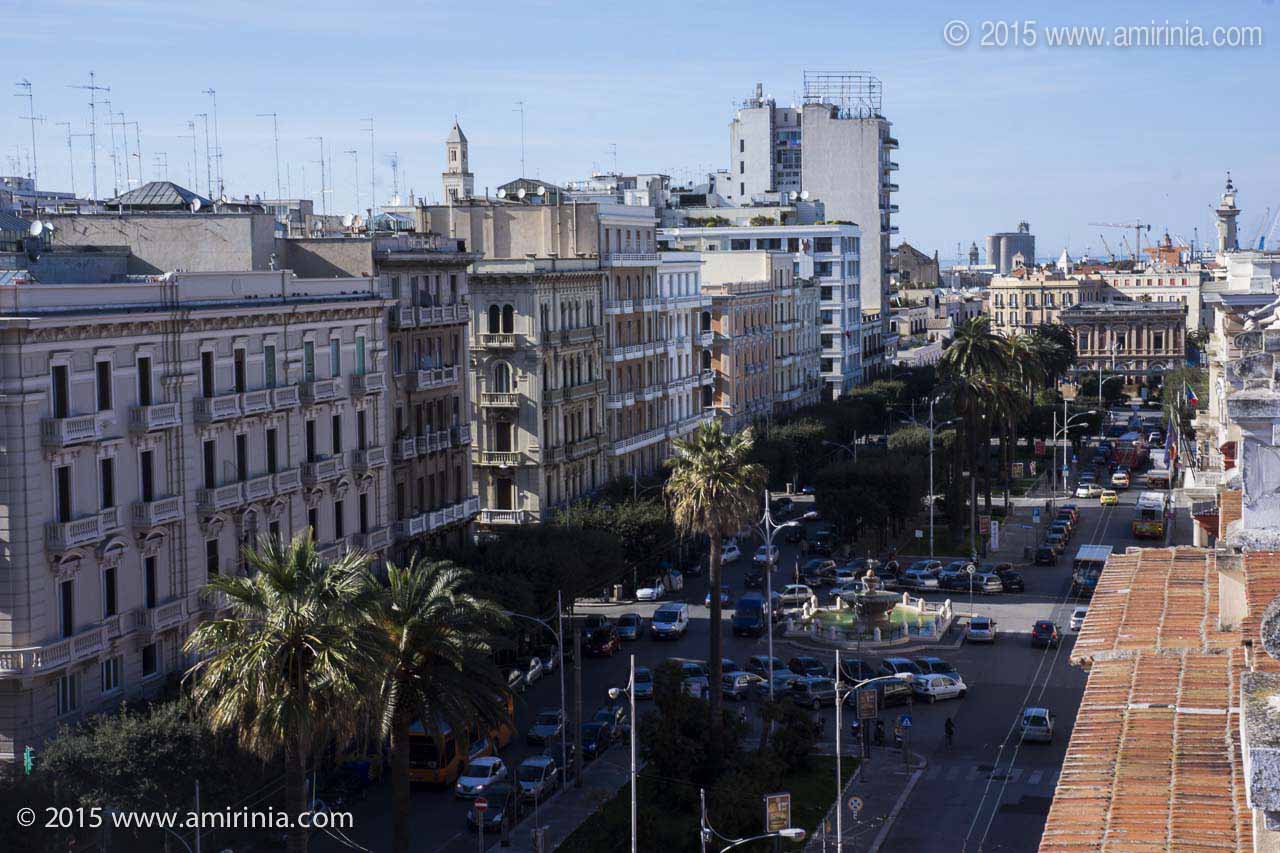
BARI
Bari, the capital of Puglia, had been a gateway into the heart of Europe for centuries. It is full of stories from the ancient Greek settlers to the Romans, Arabs, Normans, Turks and Spanish who had left their mark in a land that amalgamates eastern and western culture. The old fortified walls protecting the city still stand and are surrounded by narrow cobbled streets.
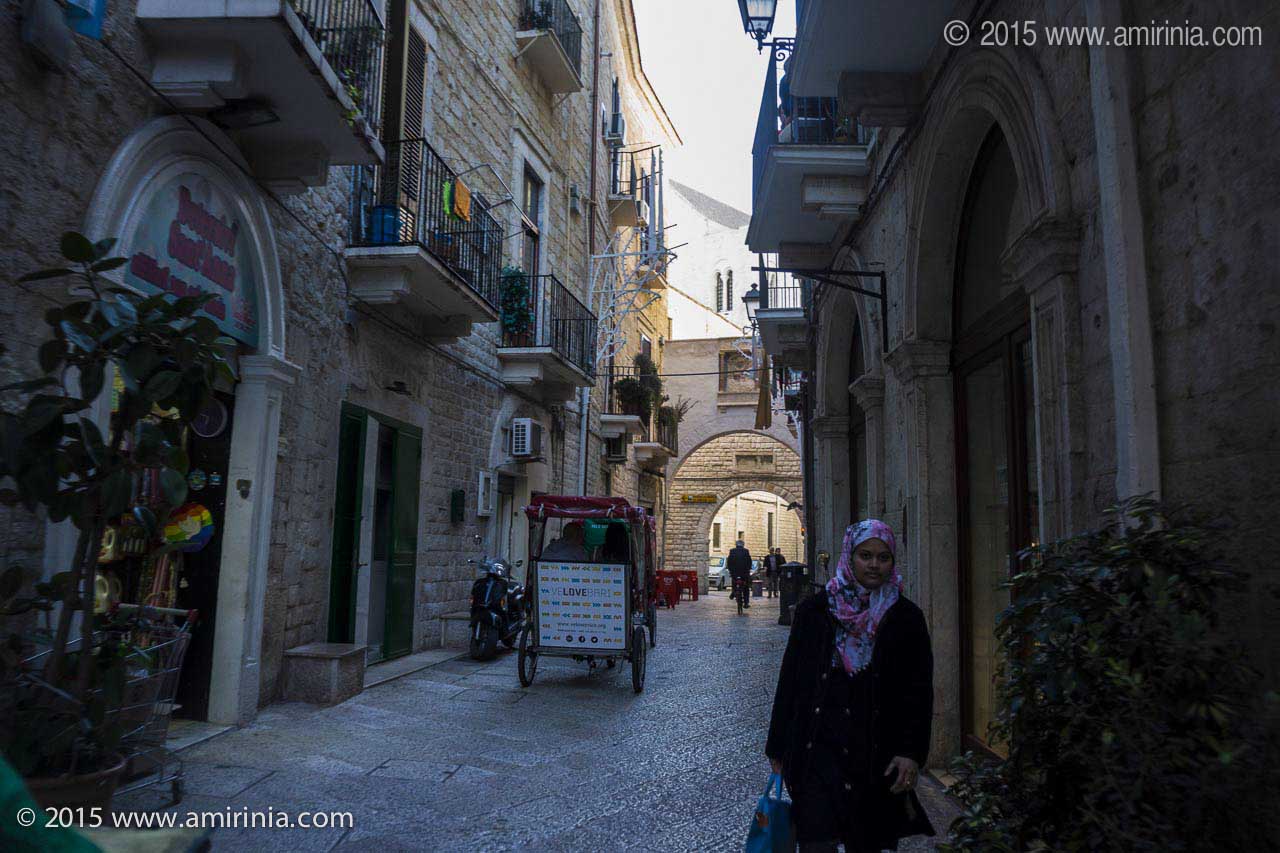
I found the best way to explore the old town was by Rickshaw, organised by Velo Service. Going through twisting alleys, passing by limestone buildings, watching the crowds in the square, children playing in public courtyards, women selling foods from their home’s windows or stalls was just magical. Trundling along the narrow paths, passing under high arches, and being able to admire the historical buildings and churches.
We started our journey along the trendy street of Corso Cavour in front of VOI Hotel Oriente, a building constructed in 1928 and representing the architectural style and opulence of Europe in the early 20th century. It is located near the famous Petruzzelli Theatre, the largest theatre in Bari and the fourth largest theatre in Italy. We passed Teatro Marcher and arrived in the Piazza del Ferrarese, a busy square buzzing with a lively mixture of old and young people, sitting around on benches, chatting and laughing. In the corner, opposite an old chapel, were the remains of a Roman road which used to connect Rome to the far south of Italy and it has been preserved as an open air museum.

Only a short ride away, we visited Piazza Mercantile, an old market place where the pilgrims used to gather to pay taxes, before heading towards the Basilica of St. Nicolas. The Palazzo del Sedile, built around 1543, with its curved architecture overlooking the Piazza, was Bari’s Council of Nobles. The Pillar of Justice with a lion sculpture in the corner of the square is a grim reminder of how debtors were tied to the column naked for several days to be shamed in public. The square is the main hub of the city as it is surrounded by bars, restaurants and ice cream shops.

As our guide pedaled his bicycle rickshaw through narrow alleys where no car could pass, he explained to me the culinary habits of Italians in this region, such as eating focaccia bread, a variety of pastas including Orecchiette which is a variety of home-made pasta typical of the Apulia Region; its name comes from its shape, which resembles a small ear; and a variety of cheeses. Our gastronomy tour started when we stopped by Panificio Fiore in Strada Palazzo di Citta, a bakery which used to be an ancient church. Behind the counter, there were several different types of breads and biscuits. I saw the old Roman columns decorated with figures of St. Nicolas and other religious icons. The bakery produces focaccia, a circular bread on to which the baker pour olive oil, cover it with black olive paste and top with tasty Italian tomatoes. I watched the cheerful baker prepare them fresh in front of me and put them into his wood-fired oven. I tasted a crunchy slice, and found it was delicious!
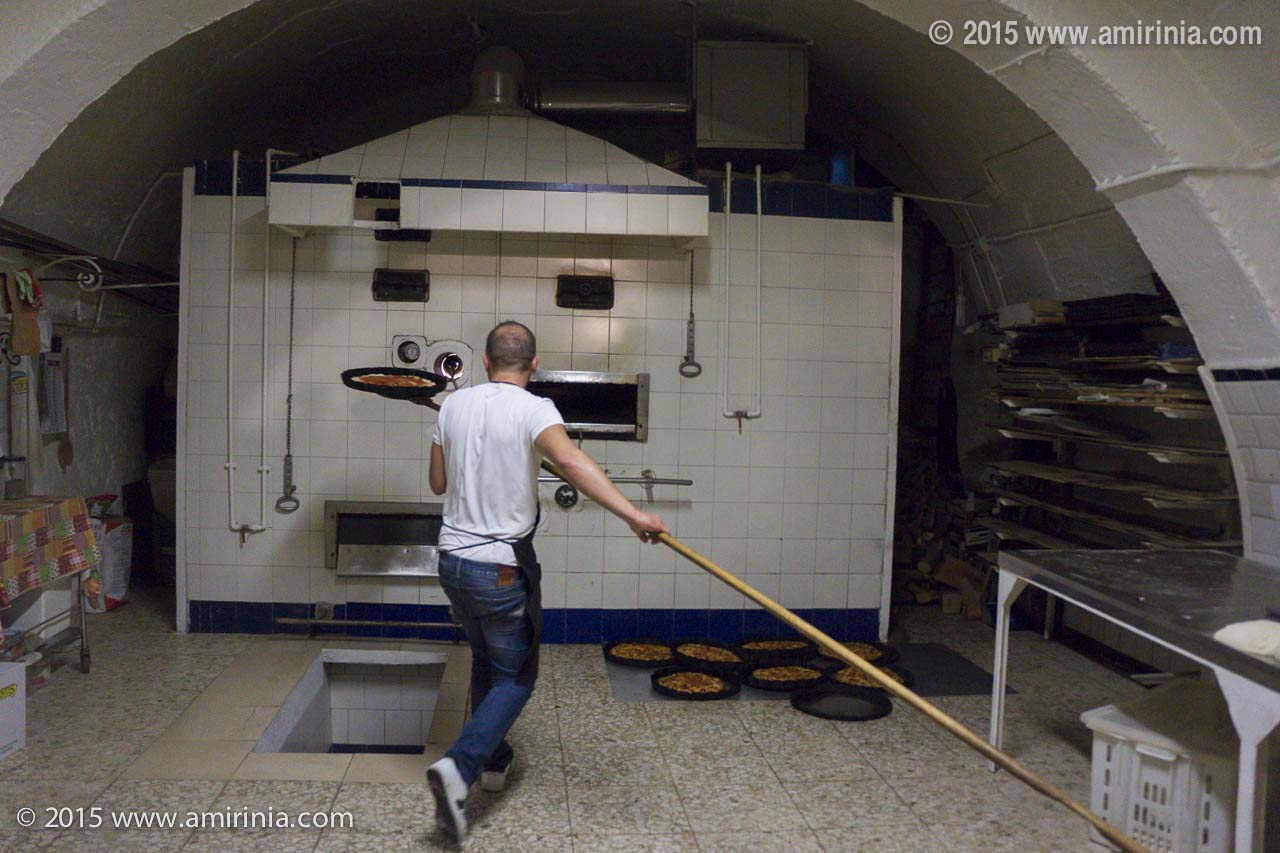
We continued our journey passing by terraced houses, mansions and small shops of grey and yellowish stone, which had become worn with the passage of time. We went through the high curved arches of Corte Del Catapano, entering into a large courtyard at the back of the Basilica of St Nicolas. The finely designed white facade of the church was very striking. The guide explained how the relics of St Nicolas were stolen from Myra in Turkey by a group of sailors and brought to Italy in 1087. The sailors are likely to have been Christians who feared that there would not be any access to the saint’s tomb for pilgrimage after the collapse of the Byzantine Empire and the expansion of Muslim rule. Bulls carried the relics from the harbour but refused to move forward when they reached the present day location of the Basilica. People believed this to be a sign from God to choose the site to build the church. Over the church entrance is engraved the sculptures of two oxen.
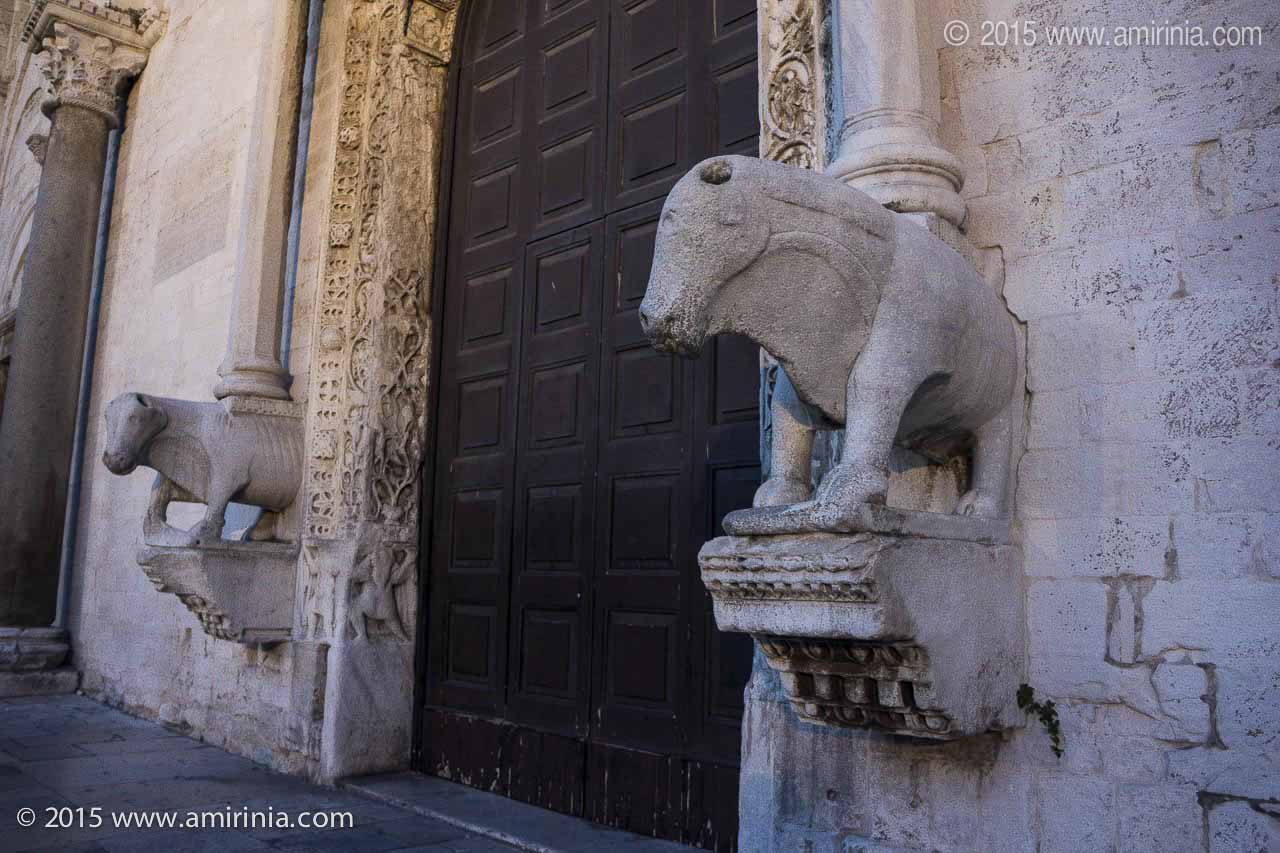
The statue of St. Nicolas outside the church is a gift from Russian people, presented by Putin to the city of Bari. Saint Nicolas, who lived in the 4th century, became a saint because of his humble life and the many miracles that were attributed to him.
Both Catholic and Orthodox Christians believe in St. Nicolas as their patron saint and protector, not only in Bari but also in many other countries. Russians, who have a special devotion to St. Nicolas, visit Bari in large numbers throughout the year.

As I entered, I saw a Catholic church with all the usual luxurious artifacts and paintings, designed with high columns and arches, and with a beautiful ceiling decorated in gold. I walked downstairs to visit the Orthodox chapel where the relics were being held in the crypt.

It was sunset and the narrow streets were lit by old-style lanterns, as we continued our journey to another part of the old town through Strada dei Bianch Dottula and stopped in front of a grocery shop called Antica Salumeria, a family run business, selling a variety of delicatessen. It was nice to taste a number of olive oils, locally produced fresh cheeses such as creamy Strachiatella, Cacio and Burrata. I also chose to eat ring shaped Taralli breads with green and black olives.

We continued our culinary trip to anther square in the center of Old Bari where a woman was running her home kitchen in the street. She was frying slices of fresh Polenta in rectangular shapes (Sgagliozze), as we arrived. The crispy pieces only cost €1 for six of them. I witnessed how she prepared ear-shaped Orecchitte from fresh pasta. She prepared the dough using Semolina flour, salt and water, creating rolls of pasta. Then she rolled them over a wooden board to create Orechitte with her thumb in a speedy process. There were hundreds of dried ones on a metal grill in her stall ready to be cooked.
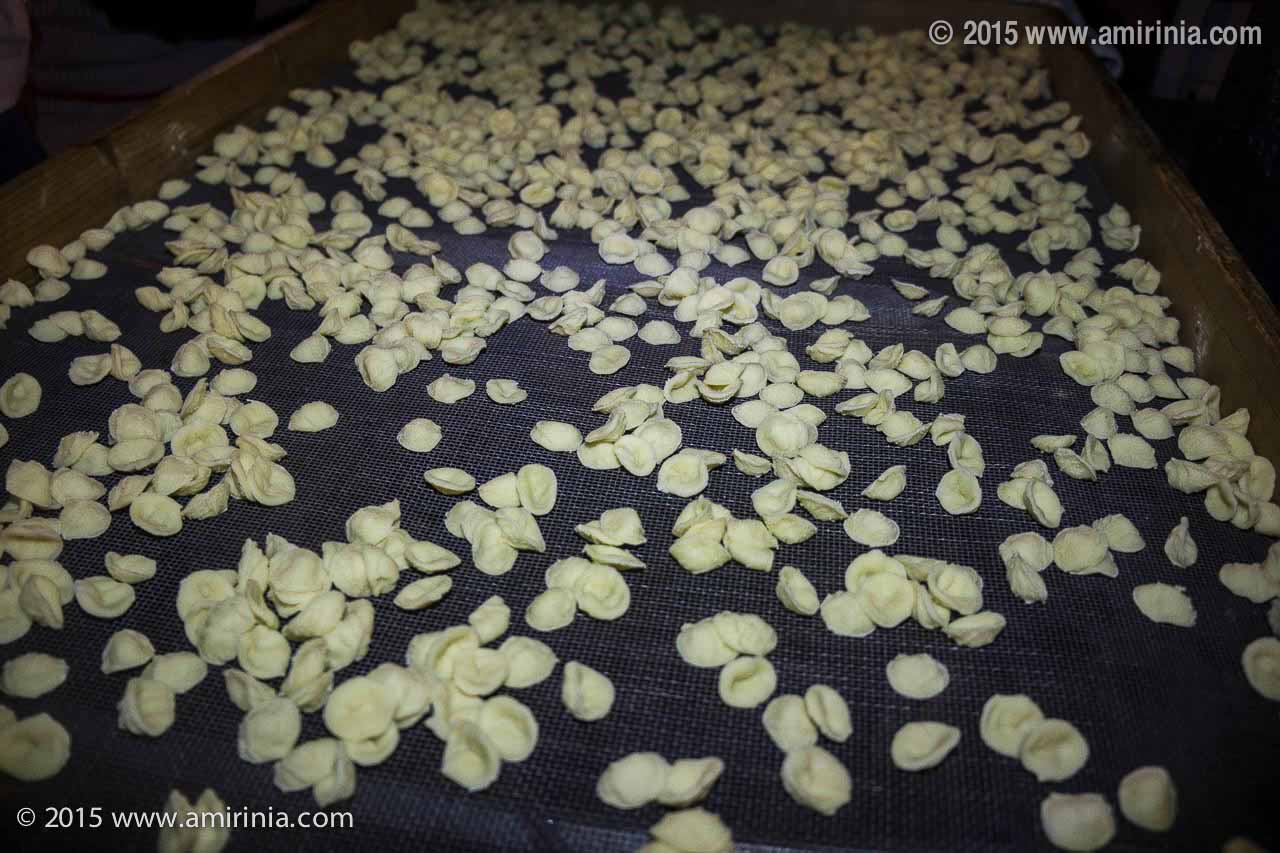
She put them in boiling water and added some vegetables, tomatoes, garlic and olive oil to cook this tasty and inexpensive food. Street food is very common in Bari and just right to serve all passers-by who wish to have a quick meal after a long day, working hard.
Pasta is one of the main food items for Italians and has been over centuries and is famous throughout the world. While I was researching about Italian cuisines, I came across notes from a book by Oretta Zanini De Vita, author of the Encyclopedia of Pasta. She wrote in her book that Muslims brought dried pasta made with durum wheat after conquering Sicily in the beginning of the 9th Century, and it spread across other regions of Italy. She has also disclaimed unfounded legends that Marco Polo presented noodles into Italian regions after returning from his trip in China. The question of the origin of pasta and who cultivated durum wheat, processed it into dough and the method of cooking the preserved pasta in boiled water probably goes back 10,000 years.
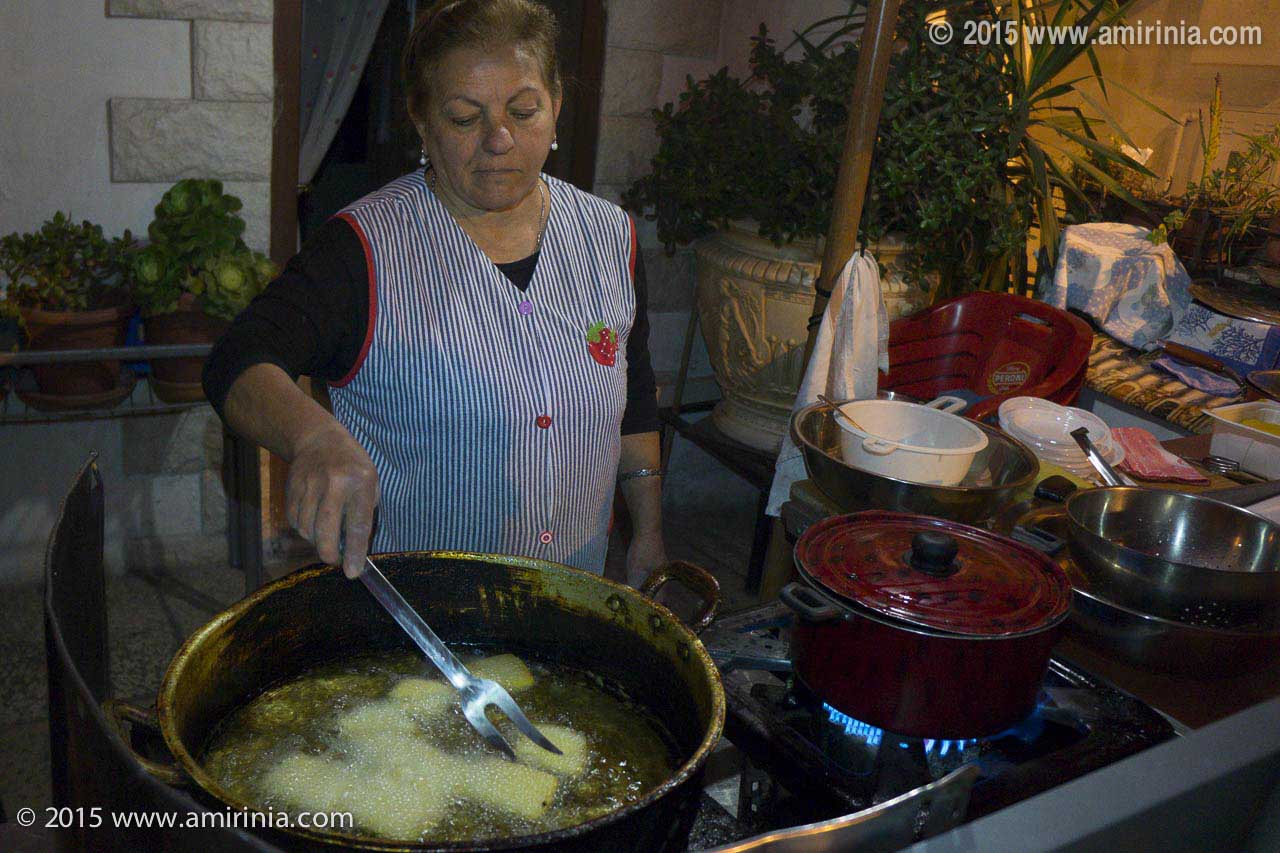
My short visit to Bari was only a glimpse of Puglia, discovering its captivating culture, tradition and enjoying the local food. I feel the need to return to Puglia and spend more time delving deeper and exploring the region more thoroughly.
For more information about Bari and Puglia click on
www.viaggiareinpuglia.it
and
www.agenziapugliapromozione.it/portal
For details of Velo Service click on
www.veloservice.org
and organise a Rickshaw tour in Bari.
For more images and video of Puglia the visit
www.amirinia.com/Puglia.
www.viaggiareinpuglia.it
and
www.agenziapugliapromozione.it/portal
For details of Velo Service click on
www.veloservice.org
and organise a Rickshaw tour in Bari.
For more images and video of Puglia the visit
www.amirinia.com/Puglia.
You may also like to read
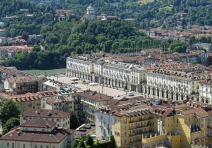
ITALY - TOURING TURIN
Touring Turin with Tour-smart is a joy as Tim Ware steers us around this interesting city vacation destination.

ITALY - LAKE GARDA
Colin Nicholson exposes Tour-smart readers to the two faces of Italy's Lake Garda.



Comments